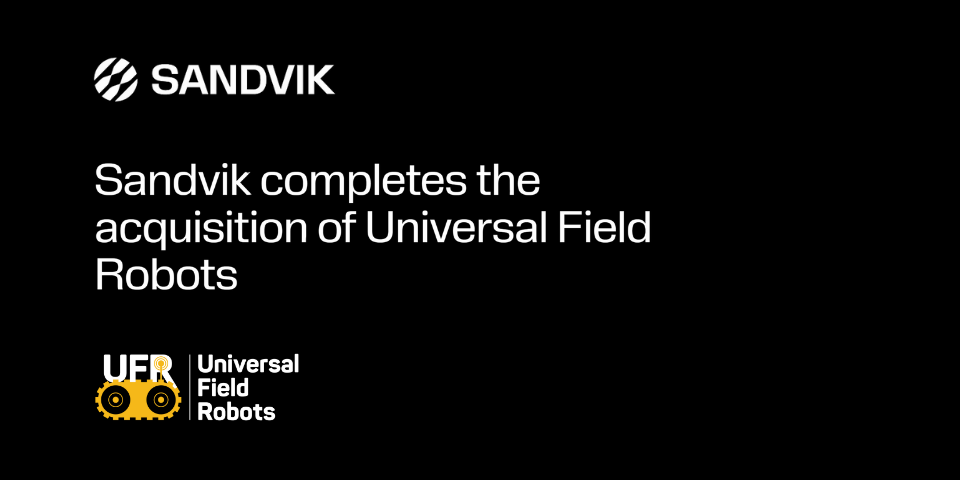Will AI eat my lunch?

By Jeff Sterling, Founder and Managing Director, Universal Field Robots
In the last few years, you may or may not have noticed an increasing shift in the number of everyday tasks that incorporate varying degrees of artificial intelligence (AI). This subtle AI transformation need not be feared, but as they say, education is power.
I would like to attempt to provide a primer to AI, help separate fact from fiction, and suggest some tips and considerations to brave the new world with AI.
Let’s start with some basics. What is Artificial Intelligence?
— Artificial intelligence is a machine’s ability to perform the cognitive functions we usually associate with human minds as defined by McKinsey & Company.
— Artificial intelligence (AI), the ability of a digital computer or computer-controlled robot to perform tasks commonly associated with intelligent beings as defined by Britannica Education.
Now that makes it clear, doesn’t it? Machines thinking, performing tasks like humans. Eating your lunch?
Other terms used for what people fear will arise out of computers and code are ‘AGI’ or Artificial General Intelligence (what humans are considered to have); and also ‘sentient’, able to perceive or feel things.
Should we believe the hype?
While media madness would have us worry, what we see with code and robots is that, compared to humans, AI is not so intelligent after all. At this stage, we see no hurry to build a bunker behind the Hills Hoist and stock it with tinned food.
In the realm of robots, we don’t see any signs of general intelligence or sentient behaviour happening now or any time soon. It would make programming robots so much less of a chore. Instead, to produce our robots, we are faced with months of effort to get relatively basic things to happen.
Most robotic actions are reactive behaviour. For instance, consider a self-driving truck that veers off course and then promptly adjusts its trajectory to return to its intended path. This can be likened to a moth instinctively being drawn towards a flame. Basic behaviour and not very smart.
What flavour is your AI?
To dive into a bit more detail, a good reference book is AI: A Modern Approach by Stuart Russell and Peter Norvig. It outlines several versions of AI, listed as search, logic and reasoning, learning, perception, and classification. The majority of what we hear in the press is related to learning or machine learning (ML for short).
For trucks moving in the world, search is used frequently in robot land. It works like someone in a dark room randomly poking around until they find the light switch. Programmes such as A-star will poke around millions of times until the best way of getting from A to B is found. Not overly intelligent, however we all use it every day in our GPS-guided cars, for example.
What should I do next? Autonomous machines decide this by falling back on some pre-programmed logic that humans have coded. Programs such as behaviour trees allow complex numbers of options to be selected and performed depending on the preconditions. Should I stop or go? Is anything in the way? Hey A-star, which is the best way to the mine?
Planning is the next leap in the AI shift where a computer will be given goals and rules and some latitude to find a new way of getting an outcome. Toy robots playing soccer have had some success with planning but have not yet left the soccer pitch to take on world domination.
Machine Learning is the only AI the media appears to publish and create hype around. This form of AI is seemingly clever, but ML is merely computer programs tuned to learn from a data set and compare and match a new piece of data to produce a result. Examples include finding a word that fits a pattern in ChatGPT and recognising cats in an image. ML requires incredible amounts of data to work, and children can perform the same task after only having seen it done a few times.
Some may say that ChatGPT is clever. Sure, but will it eat your lunch? If you are a poet or a journalist, then maybe…eventually. Neither occupation is completely concerned with the truth and so ChatGPT could work for them. ChatGPT ingests all words on the internet (45TB of text) and guesses what to add next. It works very well at this, but it is merely copying someone else’s homework. If what it copies is wrong, then the result is rubbish. This may be acceptable for journalists, but not necessarily for engineers.
Nevertheless, these tools can be very useful and capable, and knowing how to use them will become a prerequisite for more and more people. However, it is important to consider that these programs are useful and capable in the same way that a calculator will find the correct answer to a math problem. Mechanical, and later electronic calculators replaced rooms full of people who manually added numbers (strangely enough known as calculators at that time).
Automated mining trucks use most forms of AI, except for machine learning, due to ML not being deterministic and still not having widely accepted safety performance.
There’s even a school of thought that computers will never think like humans or have AGI unless they are embodied humanoids. I.e. robots with bodies that can get out and about and experience the world. Perhaps after smelling the flowers and seeing the beautiful landscapes, they could write some original poetry.
Is AI coming for my lunch?
In my view, there’s no need for the bunker yet, but there is undoubtedly a technology shift that will impact the future of work. As with the introduction of electricity, things are changing. Picks and pit ponies are a thing of the past and have long been replaced by diesel and drills. AI will change things too.
Many future elements are already with us. Drones are a visible part of the digital landscape and utilise computers, code and A-star. Most mining machines and vehicles already have computers on board. Connecting computers and adding forms of AI will enable existing machines to perform basic mining activities. Jobs will increasingly require skills like using and understanding GPS and interacting with a virtual world, similar to playing video games. Training in a simulated world is becoming more commonplace, which is effectively a more serious video game.
So, will AI eat my lunch? Well that depends. Like a lot of new technology, it will transform the way work is done. The past introduction of innovation has largely resulted in overall employment maintained, but with a much higher living standard. Most people work a full week, not for basic food and shelter, but for iPhones and health care to enable us to live longer. Jobs have already changed, and the introduction of AI will require further adjustment. While car park attendants have been replaced with perception and classification, pilots have been flying aircraft with computers in control for decades. This is a perfect example of using technology to reduce any impacts of human error and making data-driven decisions, while still having the ability to override.
New capabilities will still require people to control machines, but likely with one person controlling five trucks, for example. The impact on the number of truck drivers will be similar to when truck sizes increased from 90 to 400-tonne payloads. This has happened in the last 20 years, but slowly and so the impact has been less obvious.
New processes will be more complex and there will be an increased demand for skilled operators able to troubleshoot problems and work with data to optimise performance. Similarly, technicians will be needed to test and maintain a proliferation of new sensors that replace humans perceiving their surroundings and IT systems that will network all the sensors and information back to a control room.
A brave and exciting new world
While there is no doubt that the future of work will be impacted by AI, there doesn’t seem to be a frantic hurry. In fact, the transition will likely take many years. The first automation systems for haul trucks were trialled 20 years ago, and we have approximately 5% or less of the world’s fleet converted to autonomous trucks to date.
McKinsey’s predictions for change in mining are that by 2030, approximately 100 million workers worldwide, or one in 16, will need to transition to new jobs that require technical proficiency. They recognise a growing demand for tech-savvy miners extending to specialised departments including mine planning, process engineering, data science, and automation.
Therefore, for the current workforce, skilling up and seeking experience with new technology would be good insurance and set them up for future-facing jobs that will be in hot demand.
The next generation of schoolchildren should be encouraged to look for the areas of emerging demand. Software, mechatronics, auto electrical, IT, data science and project management will be growing areas in the future of work and likely good career choices.
So, what should we consider? I would advise being on the lookout for the changes and opportunities. If you haven’t already, commit to becoming a lifelong learner and upskill wherever possible. For now, don’t worry about digging a bunker. Limit your prepping to watching the Terminator movies at this stage, as AI is not going to eat your lunch just yet.

